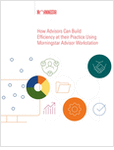“There are no shortage of black swan type events lurking in the wilderness,” according to Stephen Cucchiaro, 3EDGE Asset Management’s president and chief investment officer.
Cucchiaro founded 3EDGE, a Boston-based global, multi-asset investment management firm, in January of 2016.
While the firm is new, Cucchiaro has a pretty extensive history in investment management. He founded, and served as chief investment officer, of Windward Investment Management until June of 2014. Windward, now called Windhaven Investment Management, was acquired by Charles Schwab in 2010.
3EDGE uses primarily exchange-traded funds for its two strategies, the 3EDGE Total Return Strategy and the 3EDGE Conservative Strategy. The firm recently reached more the $300 million dollar mark in assets under management and predicts it will meet the $500 million dollar mark by the end of this year.
During a press briefing in New York, Cucchiaro explained three “black swan” scenarios that could come into play in the fourth quarter of 2016.
“We think that the time like we’re in today, the market’s even more susceptible to these [black swan type] events than before because we really believe we’re in the lower return world moving forward and a lot of that is caused by central banks,” he said.
1. Low interest rates and flattened yield curves
“We’ve never seen interest rates this low in the history of mankind,” Cucchiaro said.
As the central banks pulled all the interest rates low, that created “very flat” yield curves, according to Cucchiaro.
“As you’re trying to grow an economy, the last thing you want to do is have a flattened yield curve,” he said. “An inverted yield curve almost always leads to a recession. A flattened yield curve makes it really difficult to grow an economy and create liquidity.”
In September, the Bank of Japan announced it would keep the long-term 10-year rate at 0% and keep the short-term rates at negative in an attempt to start to create a yield curve.
“In a way, that’s like taking a bb gun to where they need a bazooka, but at least we’re hoping it starts a conversation that yield curves are important,” Cucchiaro said.
(Related: 4 Events That Could Disrupt Global Markets in Q4: Russell Investments)
Meanwhile, Europe has been ineffective at growing the economy, “which is what they need to do,” Cucchiara said.
“They’ve been ineffective at growing inflation rates,” he added. “They keep lowering rates into more and more negative territory, but they’re banking systems are having a tough time making a profit. And a lot of that’s because they have very flat [yield curves].”
In the U.S., there’s a lot of speculation about a rate hike in December. Cucchiaro hopes the Federal Research doesn’t hike short term rates, while long-term rates stay low, which he says would flatten the yield curve “even more.”








 October 17, 2016 at 11:09 AM
October 17, 2016 at 11:09 AM










